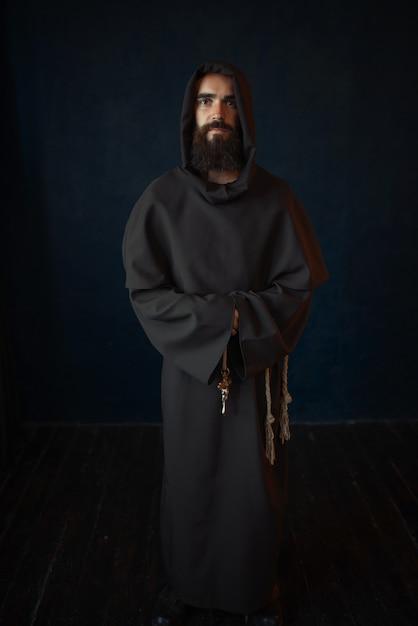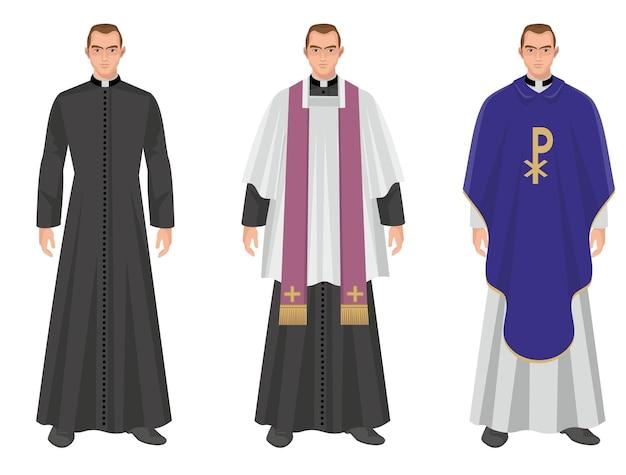The history of Canada is a tapestry woven with diverse narratives, a blend of cultures that have shaped the nation we know today. Among the various groups that played a significant role in the early days of Canada were the Jesuit Black Robes. These priests held a special place in the hearts and minds of the First Nations peoples, who bestowed upon them this unique moniker.
But who were these Jesuit Black Robes? What did their distinctive attire symbolize? In this blog post, we will delve into the fascinating world of the Jesuit missionaries, exploring their interactions with the indigenous peoples, their influential role in the development of Canada, and the meaning behind the evocative title of “Black Robe.”
So, join us on this captivating journey through history as we unravel the enigma of the Jesuit Black Robes and gain a deeper understanding of their profound impact on Canada’s early years.

Who Were the Jesuits “Black Robes”
Origins of the Jesuit Order
The Jesuits, also known as the Society of Jesus, was founded in 1540 by a Spanish soldier turned priest, Ignatius of Loyola. These “men in black robes” were not your average clergy members. They were a group of highly educated, fiercely determined, and occasionally mischievous individuals who took their mission seriously, which often led them to the far corners of the world.
The Mysterious Black Robes
The term “black robes” wasn’t just a fancy nickname for the Jesuits. It actually referred to the distinctive black cassocks they wore as part of their religious habit. This attire, which made them stand out in a crowd, symbolized their commitment to serving God and the Church.
Pioneers of the New World
As intrepid explorers, the Jesuits ventured into unknown territories, including the vast wilderness of North America. Their arrival in the New World marked the beginning of a rich history intertwined with indigenous cultures, colonization, and religious zeal. While their main focus was evangelization, the Jesuits became involved in various aspects of life, from education to diplomacy.
Missionaries or Machiavellis
Despite their religious calling, the Jesuits were far from boring. They were cunning diplomats and skillful strategists, employing unexpected methods to achieve their goals. Some even accused them of being Machiavellian in their approach, but their actions were driven by a greater purpose: to bring people closer to God.
The Jesuits and Indigenous People
When the Jesuits encountered indigenous peoples in the Americas, they saw an opportunity to spread the Catholic faith. They studied local languages, customs, and traditions to establish meaningful connections. The famous Jesuit Relations, a collection of reports from missionaries, documented their interactions with Native Americans, providing valuable insights into their cultures.
Education and Intelligence as Weapons
Education was a cornerstone of the Jesuit mission. The order established numerous schools and universities, aiming to educate both the clergy and the general population. Jesuit educational institutions became renowned for their rigorous academic standards, producing scholars, scientists, and thinkers who shaped the world for centuries to come.
The Jesuits’ Legacy
Today, the influence of the Jesuits can still be felt in fields ranging from politics to theology. They have left an indelible mark on history, showcasing the power of knowledge, the pursuit of truth, and a willingness to venture into the unknown. The “black robes” may have faded with time, but the Jesuit spirit continues to inspire and ignite curiosity in all those who seek to make a difference in the world.
In Conclusion
The Jesuits’ “black robes” were not just a symbol of their religious order; they represented their dedication to spreading the Catholic faith, their thirst for knowledge, and their unwavering commitment to serving others. These men, with their intelligence, wit, and occasional mischief, left an enduring legacy that continues to shape our world today.

FAQ: Who were the Jesuits Black Robes
In this FAQ-style subsection, we will delve into the fascinating world of the Jesuits Black Robes. Who were they? What did they symbolize? And why did the First Nations peoples of Canada refer to them as the Black Robes? Get ready for an engaging and enlightening journey into the history and significance of these mysterious figures.
What group of priests were called Black Robes by the First Nations peoples of Canada
The First Nations peoples of Canada referred to a group of priests known as the Jesuits as the Black Robes. These Jesuit missionaries arrived in the early 17th century and played a significant role in spreading Christianity among the Indigenous communities. With their distinctive black attire, the Jesuits quickly garnered the nickname “Black Robes” from the local populations.
What does a Black Robe symbolize
The Black Robe, worn by the Jesuits, symbolizes both reverence and mystery. Just like the dark cloak of the night sky hides countless stars, the Black Robes concealed a depth of knowledge and spirituality. To the First Nations peoples, the Black Robes represented the arrival of an unfamiliar faith, bringing with it new ideas, customs, and beliefs.
Who were the Jesuits Black Robes
The Jesuits, known as the Black Robes, were members of the Society of Jesus, a religious order within the Catholic Church. Founded by Ignatius of Loyola in 1540, the Jesuits focused on education, missionary work, and promoting the values of Catholicism. The Black Robes, who were part of this esteemed society, dedicated themselves to spreading the Gospel among the Indigenous peoples of Canada.
What is the salary of a barrister
Ah, the barristers! While they might not be directly related to the Jesuits Black Robes, let’s take a quick detour into the world of law. The salary of a barrister can vary greatly depending on their experience and specialization. In the United States, barristers are typically referred to as attorneys or lawyers. As of 2023, the average salary for a lawyer in the US is around $126,930 per year, but keep in mind that this can vary based on location, firm size, and individual achievements.
Do female barristers wear wigs
Now, this is an interesting question! Traditionally, barristers in the United Kingdom have been known to wear wigs as part of their courtroom attire. However, times are changing, and so are fashion trends in the legal world. In recent years, there has been a movement towards more gender-neutral and modern courtroom attire, leading to a decline in the use of wigs. While some female barristers may choose to wear wigs, it is no longer mandatory or commonplace.
What is higher than a barrister
Ah, the legal hierarchy! Above barristers, you’ll find the esteemed position of a judge. A judge presides over court proceedings, making impartial decisions based on the law and evidence presented. Judges are appointed or elected to their positions and have the authority to interpret and administer justice. So, while barristers advocate for their clients in court, judges hold the highest authority, ensuring fair and just proceedings.
What does Black Robe mean
Now, let’s circle back to our main topic. The term “Black Robe” refers to the Jesuit missionaries who donned black attire while carrying out their mission work, primarily among the First Nations peoples of Canada. Beyond its literal meaning, “Black Robe” also carries a deeper symbolism. It represents the cultural exchange, spiritual transformation, and the blending of traditions that occurred during the interaction of Indigenous communities and European missionaries.
Now that we’ve shed some light on the Jesuits Black Robes, their significance becomes clearer. Their distinctive attire, peaceful teachings, and cultural interactions left an indelible mark on the history and spirituality of the First Nations peoples of Canada. The Black Robes brought not only Christianity but also new perspectives and understanding to all those they encountered. Their journey continues to intrigue, inspire, and serve as a reminder of the bridges built between diverse cultures.
